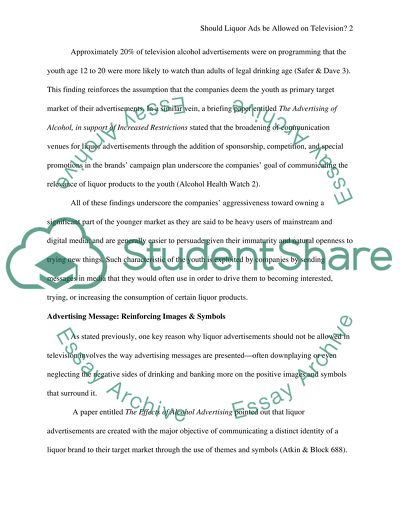Cite this document
(“Should liquor ads be allowed on television Essay”, n.d.)
Should liquor ads be allowed on television Essay. Retrieved from https://studentshare.org/english/1620630-should-liquor-ads-be-allowed-on-television
Should liquor ads be allowed on television Essay. Retrieved from https://studentshare.org/english/1620630-should-liquor-ads-be-allowed-on-television
(Should Liquor Ads Be Allowed on Television Essay)
Should Liquor Ads Be Allowed on Television Essay. https://studentshare.org/english/1620630-should-liquor-ads-be-allowed-on-television.
Should Liquor Ads Be Allowed on Television Essay. https://studentshare.org/english/1620630-should-liquor-ads-be-allowed-on-television.
“Should Liquor Ads Be Allowed on Television Essay”, n.d. https://studentshare.org/english/1620630-should-liquor-ads-be-allowed-on-television.


